A powerful, long-duration solar flare measuring X4.5 erupted from Active Region 3663 at 06:35 UTC on May 6, 2024. The event started at 05:38 and ended at 06:47 UTC.
This is the 4th and the strongest X-class solar flare from Region 3663 — following X1.6 on May 3, and X1.3 and X1.2 on May 5. It is also the 3rd strongest solar flare of Solar Cycle 25 — following X6.3 on February 22, 2024, and X5.0 on December 31, 2023.
At the time of press, there were no radio signatures detected that would suggest a coronal mass ejection (CME) was produced by this event.
Radio frequencies were forecast to be most degraded over eastern Europe, the Middle East, NE Africa, Asia, the Indian Ocean, and the West Pacific at the time of the flare.
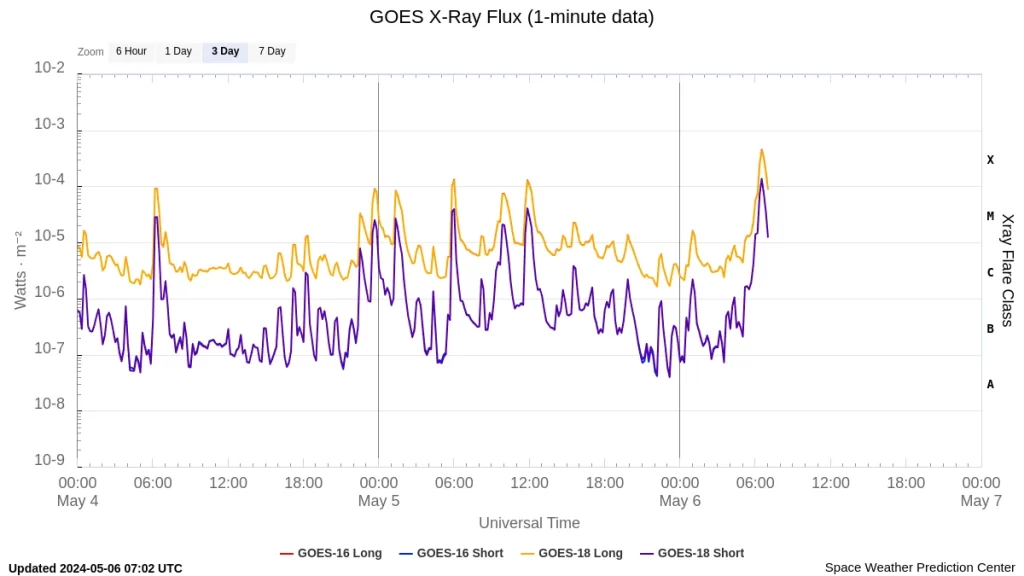
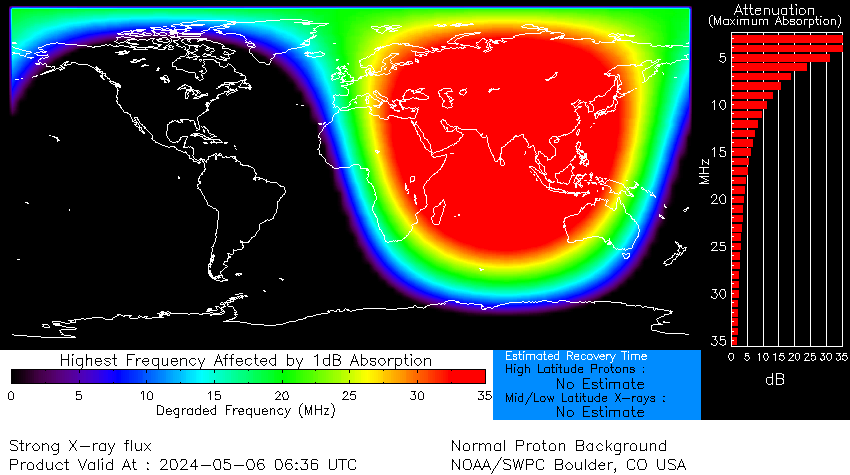

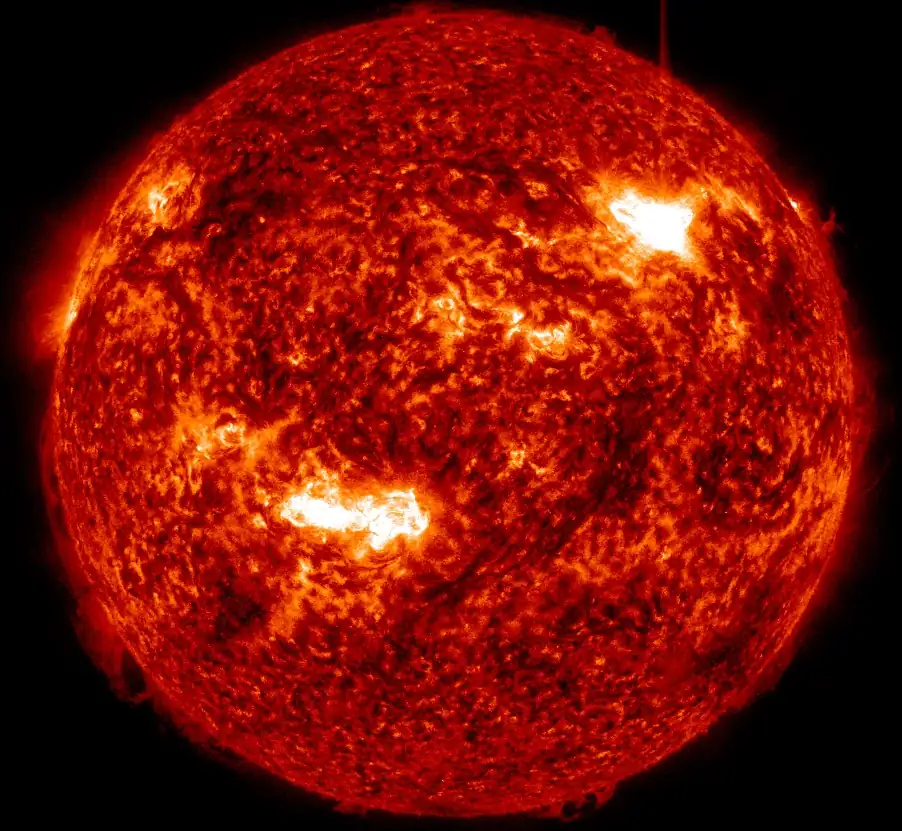

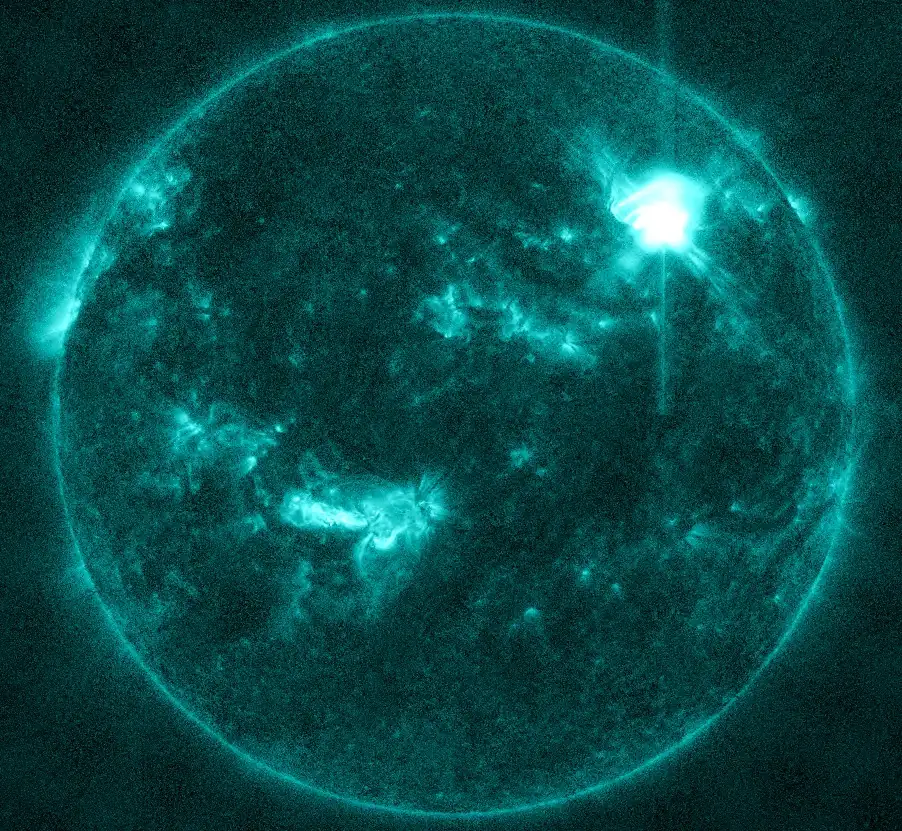

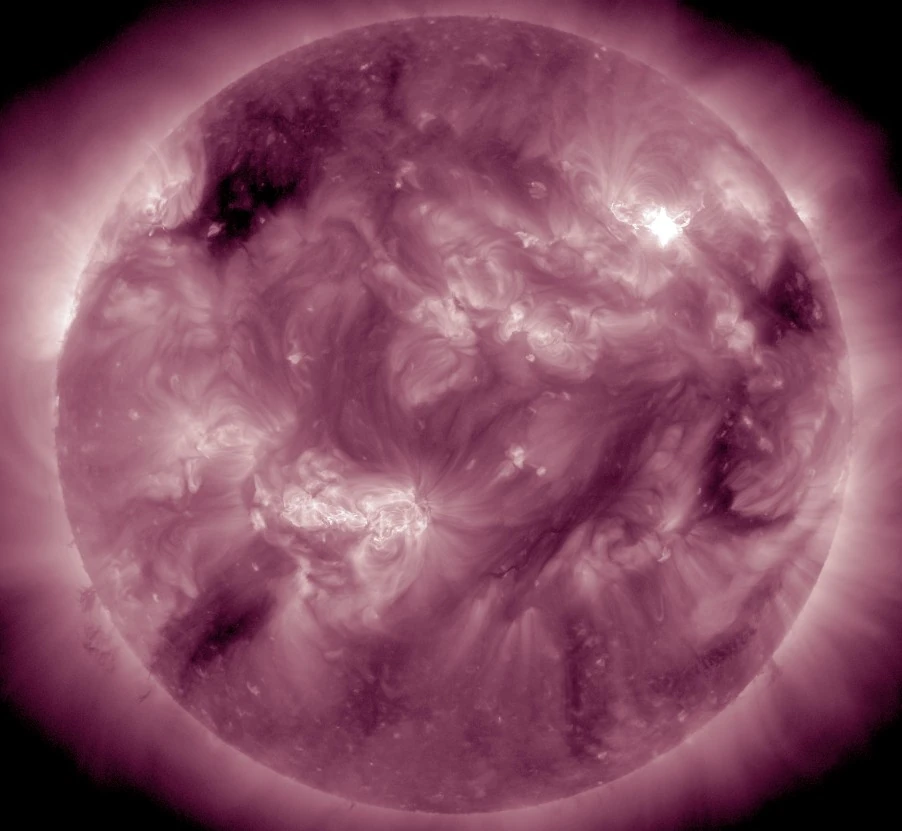

Solar activity reached very high levels in 24 hours to 00:30 UTC on May 6, with two X-class flares and nine M-class flares observed throughout the period. This period also saw a marked increase of the background X-ray flux and the overall intensity and frequency of flare activity.
Region 3663 (beta-gamma-delta) produced an X1.3/1b flare at 06:01 UTC and an X1.2/1b flare at 11:54 UTC on May 5, along with two R2 – Moderate events and four R1 – Minor events.
The region continued a trend of growth with the consolidation of mixed polarity spots noted in the intermediate spot area.
Region 3664 (beta-delta) increased in areal extent and total spot count, and produced three R1 – Minor events.
Minor growth was observed in new Region 3668 (beta) while new Region 3669 (alpha) was stable. The remaining regions were either stable or in decay.


Coronagraph imagery from SOHO/LASCO has been restored following an outage that began around 23:27 UTC. All CME events that occurred during the outage have been analyzed and no Earth-directed CMEs were detected, SWPC forecasters said.
Solar activity is expected to be at high levels through May 8, with M-class flares expected (90%) and a high chance for X-class flares (50%), due to the flare potential of Regions 3663 and 3664.
There is a chance (30%) for the greater than 10 MeV proton flux to reach S1 – Minor solar radiation storm levels through May 8 due to the flare potential of Regions 3663 and 3664.
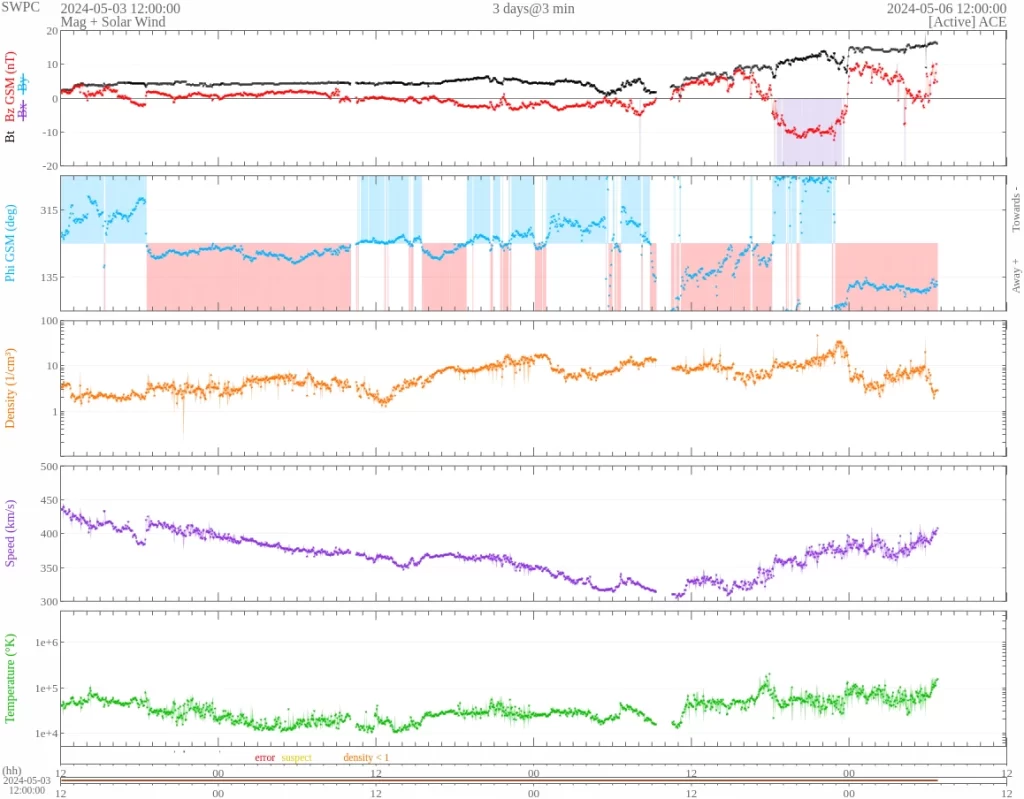

Ambient solar wind conditions were observed until around 15:00 UTC on May 5, when a mild enhancement, likely associated with the arrival of the CME produced by the X1.6 flare on May 3, commenced. Total field strength increased to 14 nT late in the day and the Bz component was sustained southward, by as much as -12 nT, after 18:30 UTC. Solar wind speeds fluctuated between 300 – 390 km/s and the phi angle was variable.
Periods of G1 – Minor to G2 – Moderate storming are likely today due to CME activity and positive polarity coronal hole high speed stream (CH HSS) influences. Active conditions are likely on May 7 with the expected onset of another positive polarity CH HSS.
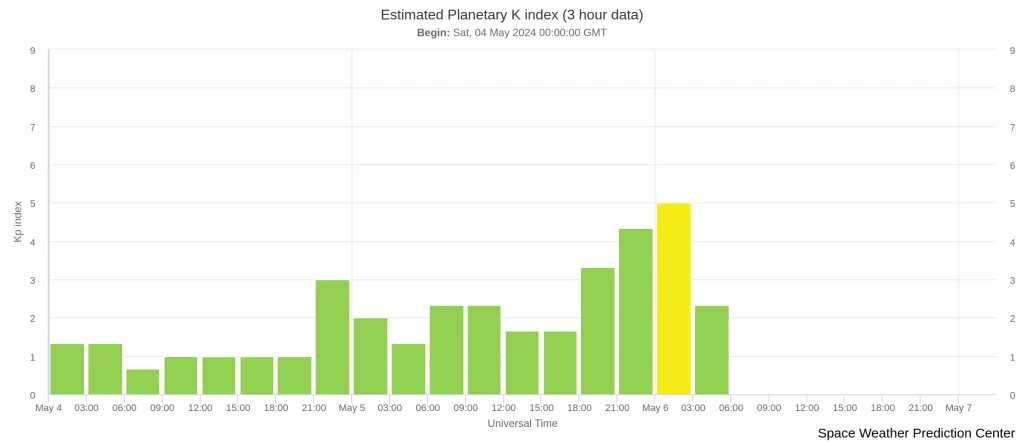

References:
1 Forecast Discussion – Issued: 2024 May 06 0030 UTC – Prepared by the U.S. Dept. of Commerce, NOAA, Space Weather Prediction Center
Featured image: X4.5 solar flare on May 6, 2024. Image credit: NASA SDO/AIA 304, Helioviewer, The Watchers
Major X1.2 solar flare erupts from Region 3663 — second X-class flare of the day
Sunday, May 5, 2024
Major X1.3 solar flare erupts from Region 3663
Sunday, May 5, 2024
M9.1 solar flare erupts from geoeffective Region 3663
Saturday, May 4, 2024
X1.6 solar flare erupts from Region 3663, forecast calls for CME impact late May 5
Friday, May 3, 2024
Two stealth CMEs impact Earth, producing G3 – Strong geomagnetic storm
Thursday, May 2, 2024
Rare quadruple solar flare event on April 23, 2024
Wednesday, April 24, 2024
CME impact sparks unexpected G3 – Strong geomagnetic storm, red aurora in Missouri, U.S.
Saturday, April 20, 2024